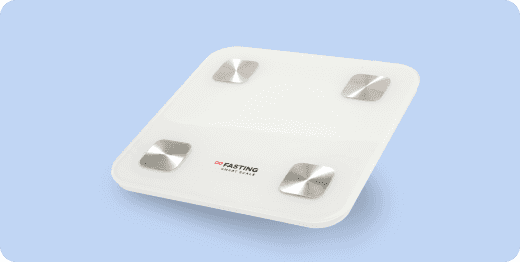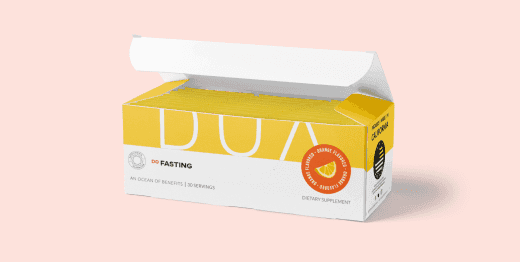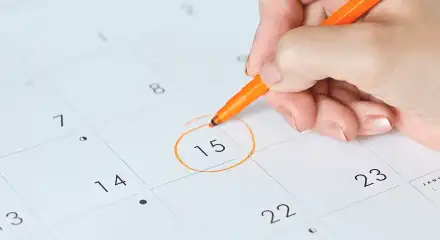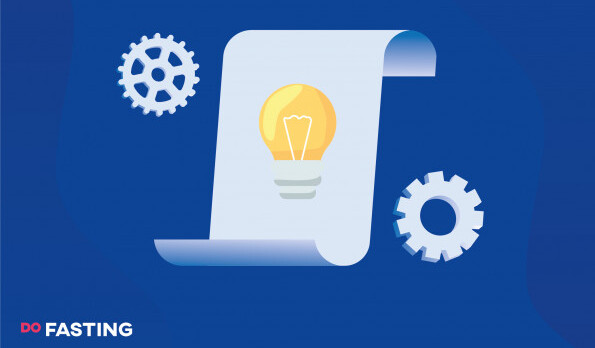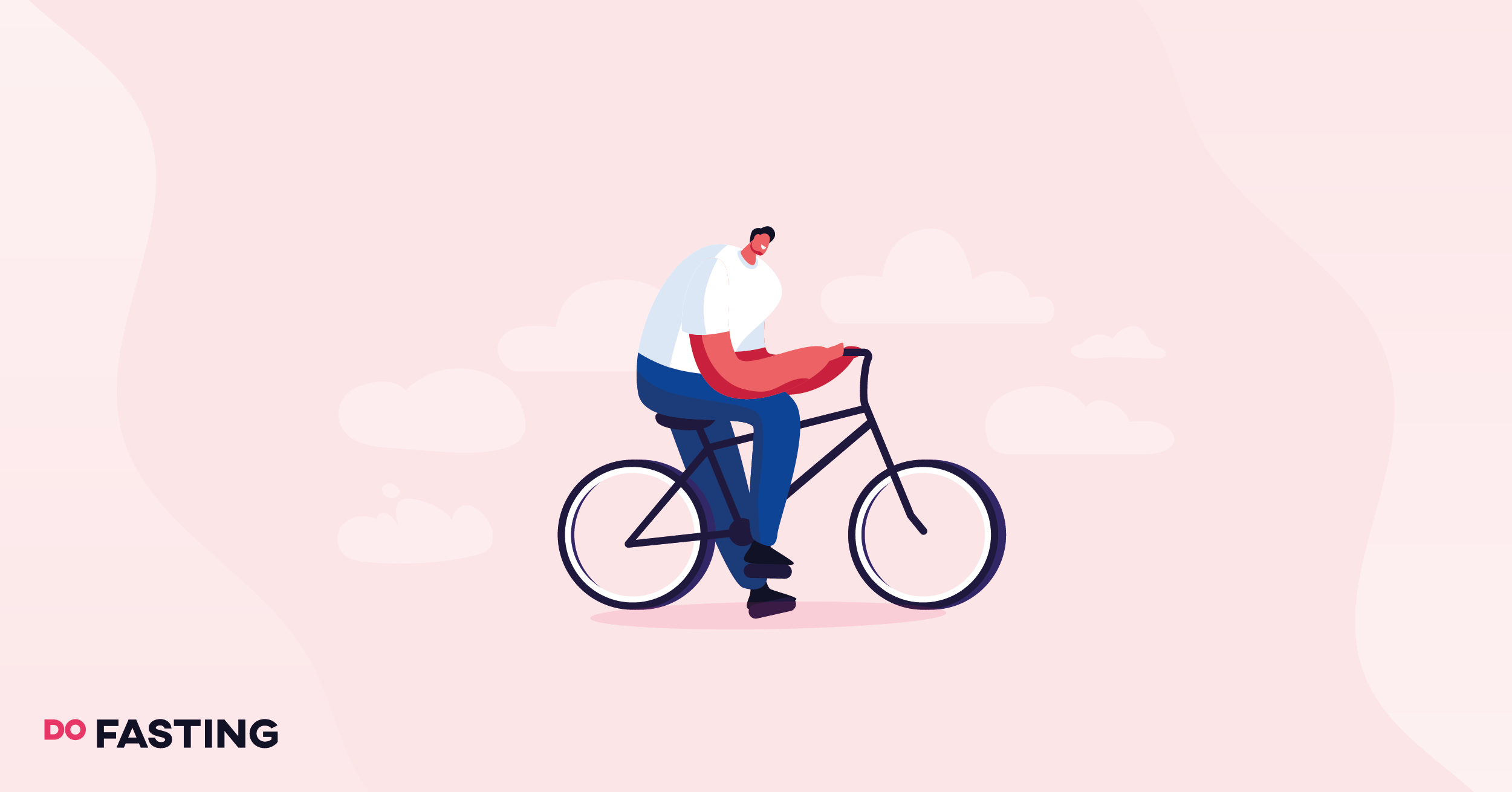Contents
Proper Nutrition Is Key
Weight loss requires proper nutrition, regardless of the body part you want to focus on. But what exactly does this mean?
Be sure to follow a balanced diet
A balanced diet refers to foods from all primary groups, including vitamins, minerals, and other nutrients that promote proper body functioning.
A well-balanced diet is essential to avoid diseases such as obesity, type 2 diabetes, metabolic syndrome, and high blood pressure. It can also help you limit the number of calories you consume in a day, which can lead to weight loss.
An average person requires about 2,000 calories every day for their body to function, so try to stay under this threshold while trying to lose body fat and as part of a healthy lifestyle—this will be crucial to keep in shape the long run.
There is no one-size-fits-all when it comes to following a balanced diet, as every body has its unique needs. However, there are specific guidelines you can begin with:
- Include a variety of nutrient-dense foods into your diet — we’ll go over these in the upcoming section.
- Remember portion control — pay attention to what you eat and stop when you start feeling full.
- Stay hydrated — prioritize water over carbonated and sugary drinks.
- Limit processed, high-calorie foods — these foods will only limit your progress.
- Seek professional advice if needed — a nutritionist can help you determine the best course of action for your circumstances.
Take a
1-minute quiz
and discover how much weight you can lose with DoFasting!
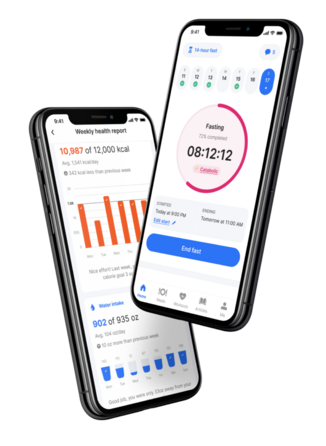
Prioritize whole foods
To guarantee proper nutrition, incorporate as many whole foods as possible, such as:
- High-fiber foods — fruits, vegetables, whole grains, nuts, seeds.
- Proteins — meat, poultry, fish, eggs, and dairy products.
- Healthy fats — nuts, seeds, fish, and vegetable oils.
High-fiber foods help reduce hunger, which leads to consuming fewer calories and can help in your weight and arm fat loss process. Moreover, an amount of fiber as small as 30 grams per day can help you lower your blood pressure, improve your body’s response to insulin, and, of course, help you lose excess fat in your arms.
Proteins, on the other hand, alter the levels of many hormones that regulate weight. A higher protein diet can boost appetite-reducing hormones such as peptide YY and cholecystokinin, while decreasing levels of ghrelin, a hunger hormone.
Foods rich in unsaturated fat improve blood cholesterol levels and help curb hunger pangs.
Foods you should avoid
When attempting to reduce arm fat (or any fat for that matter), it’s critical to focus on creating a deficit by consuming fewer calories than you burn via physical exercise and daily living. To do so, it is essential to avoid certain foods that will only hinder your progress:
- Refined carbs — these include baked goods, pasta, and white bread. Foods that are high in refined carbs can cause blood sugar spikes.
- High-sugar foods — chocolate, ice cream, and other treats are high in sugar and calories, which can lead to weight gain.
- Fried and high-fat foods — french fries, potato chips, onion rings, pizzas, and cheeseburgers are high in calories and can lead to weight gain.
- Foods high in sodium — too much sodium can cause water retention, leading to bloating and arm fat appearance. These foods can be canned meats, seafood, frozen meals, baked beans, bagels, sauces, etc.
- Alcohol — alcohol is high in calories, increases hunger, and can lead to weight gain.
Take Up Some Arm Exercises
You already understand how nutrition can support you in your efforts to lose arm fat. Let’s now look at some exercises to help you see results faster.
Bodyweight exercises for arms
It’s vital to know that spot reduction (decreasing fat from a specific body area) is not achievable on its own. To reduce fat from any part of the body, including the arms, you must first establish a calorie deficit.
To start burning more calories than you consume, it’s essential to establish a workout routine you can stick to. You don’t need to hit the gym every day right off the start—you can simply begin with short exercises at home and build your way up from there.
Bodyweight workouts are an excellent way to start exercising without the need to buy equipment or a gym membership. In these exercises, you use your own body weight as resistance instead of weights, dumbbells, or bands—they are the perfect way to reintroduce your body to sport.
Strength, flexibility, and endurance may all be improved with bodyweight exercises. And yes, these workouts can also help you burn arm fat and achieve toned arms.
Let’s see some examples of bodyweight exercises you can try:
Push-ups:
Push-ups are a complex exercise that works many upper-body muscles: the chest (pectoralis major), triceps, and shoulders are all used during a push-up (anterior deltoids). This exercise also targets the core, back, and leg muscles, making it an excellent full-body workout.
- Start in a plank position with your hands placed shoulder-width apart on the ground. Your body should be straight from your head to your feet.
- Lower your body towards the ground, bending your elbows until your chest almost touches the ground.
- Push your body back up to the starting position.
- Repeat for the desired number of reps.
If this sounds challenging, you can apply some modifications: you can do the same exercise with your knees touching the ground or, if you want something even easier, do the same movements but standing against the wall.
Dips:
Dips primarily work the triceps muscles, which are located on the rear of the upper arm. Nonetheless, this exercise also targets the chest, shoulders, and core muscles.
- Find two sturdy surfaces, such as parallel bars or the edge of a bench.
- Place your hands on the surface with your fingers pointing forward and shoulder-width apart.
- Lower your body by bending your elbows, keeping them close to your sides.
- Push back up to the starting position, fully extending your arms.
- Repeat for the desired number of repetitions.
You can also do this exercise on the floor for an easier variant.
Plank to Downward Dog:
This exercise targets the triceps, shoulders, core, and upper back.
- To perform the plank to downward dog, start in a high plank position with your hands directly under your shoulders.
- Keeping your core engaged, lift your hips up and back, coming into a downward dog position.
- Hold for a moment, then lower your hips back down into the plank.
- Aim for 3 sets of 10-15 reps.
Arm Circles:
This simple exercise targets the shoulders and the upper part of your arms.
- To perform arm circles, stand with your feet shoulder-width apart and raise your arms out to the sides at shoulder height.
- Begin making small circles with your arms, gradually increasing their size.
- After 10-15 circles in one direction, switch directions and repeat.
- Aim for 3 sets of 10-15 circles in each direction.
You can also do upper arm lifts, tricep dips, and other exercises that target arm muscles.
If you want to take your workouts a bit further, it might be a good idea to start using weights.
Weight exercises for arms
Including weight workouts into your routine can help you tone your arms, build muscle, and see results faster.
To choose the right weight, look for a dumbbell that allows you to do up to 6 repetitions with moderate effort. If you haven’t exercised your arms before, see how you feel with 2- to 3-pound weights.
Here are a few examples of weight exercises that can help you lose arm fat:
Bicep curls:
This exercise targets the biceps muscles in the front of the upper arms.
- To perform a bicep curl, stand with feet shoulder-width apart, holding a dumbbell in each hand with palms facing forward.
- Keeping your elbows close to your sides, curl the weights up towards your shoulders, then lower them back down to the starting position.
- Aim for 3 sets of 10-15 reps.
Tricep extensions:
This exercise targets the triceps muscles in the back of the upper arms.
- To perform a tricep extension, stand with feet shoulder-width apart, holding a dumbbell in each hand.
- Raise the weights above your head with arms straight, then slowly lower the weights behind your head, bending your elbows.
- Return to the starting position and repeat.
- Aim for 3 sets of 10-15 reps.
Hammer curls:
This exercise targets the brachialis and brachioradialis muscles in the forearms and the biceps.
- To perform a hammer curl, stand with feet shoulder-width apart, holding a dumbbell in each hand with palms facing each other.
- Curl the weights up towards your opposite shoulders, keeping your elbows close to your sides, then lower them back down to the starting position.
- Aim for 3 sets of 10-15 reps.
Overhead press:
This exercise targets the deltoids (shoulder muscles) and the triceps.
- To perform an overhead press, stand with feet shoulder-width apart, holding a dumbbell in each hand.
- Raise the weights up to shoulder level, with elbows bent and palms facing forward.
- Press the weights above your head, extend your arms fully, then lower them back down to the starting position.
- Aim for 3 sets of 10-15 reps.
Cardio exercises for arms
Cardio is an exercise that elevates your heart rate, which helps the body burn calories and excess body fat. Cardio has been proven to lower your body weight, leading to slimmer arms.
Here are 4 examples of cardio exercises that will help you burn fat in the arms:
Jumping jacks:
- Stand with your feet together and your arms by your sides.
- Jump your feet out to shoulder-width apart while raising your arms overhead.
- Jump your feet back together while lowering your arms to your sides.
- Repeat for 30-60 seconds.
Mountain climbers:
- Start in a high plank position with your hands shoulder-width apart and your body in a straight line.
- Bring one knee in toward your chest, then quickly switch and bring the other knee in while extending the first leg back.
- Continue alternating legs for 30-60 seconds.
Burpees:
- Start in a standing position, then drop down into a plank position.
- Jump your feet back up to your hands and stand up, finishing with a jump straight up in the air.
- Repeat for 30-60 seconds.
Speed bag punches:
- Mimic the movement of a speed bag with your fists, moving your arms quickly and in a circular motion.
- Alternate directions and vary your speed for 30-60 seconds.
Note that it’s recommended to do at least 20-40 minutes of cardio a day, or about 150-300 minutes each week.
Take a
1-minute quiz
and discover how much weight you can lose with DoFasting!

Take Care of Your Overall Lifestyle for Arm Fat Loss
Aside from a healthy diet and exercise, there are other lifestyle changes you can do to help you lose arm fat.
Manage stress
Managing your stress levels is essential for overall health, but it becomes even more relevant when on a weight loss journey.
When you’re stressed, your body produces the hormone cortisol. This hormone triggers hunger and can lead to overeating, making it more challenging to stay in a calorie deficit and undermine all your progress.
There are multiple ways you can manage stress while working on your weight loss:
- Exercise regularly — exercise improves your self-confidence, improves your mood, and has an overall positive impact on your mental health.
- Practice mindfulness — mindfulness exercises can reduce the intensity of your stress responses.
- Take breaks — taking a few minutes for yourself at work or when things become overwhelming can help you think more clearly and change your perspective.
- Plan your meals ahead of time — planning your healthy meals in advance will help you save time while helping you stick to your goals.
- Connect with other people — talking about your struggles with people you trust or a professional can really help you calm down and find a solution to your problem.
Get enough sleep
Sleep plays a crucial role in weight loss and overall health:
- It’s essential for the body’s metabolism to function properly
- It can help regulate hormones
- It helps improve mood and energy levels
- And it reduces hunger and the risk of overeating
Research has shown that individuals who do not get enough sleep are more likely to feel hungry and experience cravings, especially for high-carbohydrate, high-fat, and calorie-dense foods. This may be due to the increased production of ghrelin, a hormone that stimulates appetite.
To promote good sleep hygiene and improve your chances of getting adequate sleep, it’s essential to follow a regular sleep schedule—going to bed and waking up at the same time every day, even on weekends, can help you regulate your sleep cycle and have a positive impact on your general health.
Limiting screen time before bed is also important, as the blue light emitted by electronic devices can disrupt the body’s natural sleep-wake cycle. Instead, consider engaging in relaxing activities before bed, like taking a warm bath or reading a book.
Finally, avoid caffeine and alcohol before bedtime, as they can interfere with sleep quality and duration.
Keep yourself properly hydrated
The general recommendation for healthy adults is to consume about 6 to 8 glasses of water per day, each glass being approximately 8 ounces. Staying hydrated is especially important when trying to shed some weight and overall body fat.
Drinking a glass of water or two before a meal can help you feel fuller and more satisfied for more extended periods of time, ultimately reducing your overall calorie intake. This is because water takes up space in the stomach, making you feel less hungry and less likely to overeat.
In addition, adequate hydration can help boost your metabolism, which is crucial for burning calories, maintaining a healthy weight, and of course, losing arm fat. One study found that drinking 16.9 ounces (500 ml) of water increased metabolic rate by 30% for 30-40 minutes, meaning your body can burn more calories faster.
To stay hydrated when trying to lose arm fat, you can always carry a water bottle, set up reminders, or use the DoFasting app to track your water consumption.
Limit alcohol intake
There are multiple reasons to avoid alcohol while trying to lose weight:
- First, alcoholic drinks are high in calories, which will make it harder to maintain a calorie deficit.
- Alcohol can disrupt your metabolism and hormone balance, making it more challenging to shed weight.
- It can also interfere with the synthesis of appetite and metabolism-regulating hormones like leptin and ghrelin, resulting in increased hunger and decreased calorie burning.
If you choose to lead a healthier lifestyle, try to consume alcohol in moderation and prioritize alcohol-free drinks.
Other Useful Tips and Tricks for Arm Fat Loss
Let’s wrap things up with a few additional tricks to support you on this journey.
Try intermittent fasting for weight management
Intermittent fasting is a time-restricted eating method that can help you reduce weight and improve your health. It’s not a diet and does not restrict your eating habits within your eating window. Having a fasting window, however, forces you to consume fewer calories, which can contribute to weight loss and help you shed arm fat.
A comprehensive analysis of 40 studies, for example, discovered that intermittent fasting was helpful for weight loss, with a typical loss of 7-11 pounds over 10 weeks.
To ease your way to losing arm fat, try one of the many types of intermittent fasting available (12:12, 14:10, 16:8, 18:6, 20:4, and so on). The DoFasting app can help you choose the best fasting method for your needs; plus it offers multiple functionalities to optimize your fasting experience, like a fasting timer, calorie, water, step tracker, and many other tools.
Consistency is key
Losing weight from any specific body part or gaining muscle is not easy, and it requires a lot of effort and consistency. It is a gradual process that demands dedication, discipline, and patience. Simply relying on quick-fix solutions or temporary changes in diet and exercise routines will not lead to sustainable weight loss.
Hence, developing a consistent approach to exercise and diet is essential to achieve and maintain weight loss results. This involves making regular physical activity a part of your routine and sticking to a healthy and balanced diet plan that promotes weight loss.
As previously stated, bodyweight workouts, resistance training, strength training, weight training, and cardio exercises can all be used to increase fat burning in your arms. Combining these with a nutrient-dense diet will put you on the right track to a healthier, fitter version of yourself.
Monitor your progress
Monitoring your progress is essential when trying to burn fat, as it provides necessary feedback on whether or not your diet and exercise routine are working. This can also help you stay motivated as you see the changes happening over time.
There are several ways to monitor your progress when trying to lose fat and weight, including tape measurements, weighing yourself, and taking photos of yourself.
The most accurate way to track changes in the size of your arms is to take measurements at regular intervals. Weighing yourself can also give you an insight into your overall progress.
You can also download the DoFasting app and track your weight and how many calories you consume.
Monitoring your progress will help you understand if you need to make any adjustments to your routine. This can include modifying your diet or exercise routine to increase your calorie deficit or trying different exercises that target your arms more effectively.
Take a
1-minute quiz
and discover how much weight you can lose with DoFasting!

How To Lose Weight in Arms: Final Thoughts
There is no simple way to burn fat in any particular body part. When trying to lose arm fat, the key is to focus on overall fat loss and do targeted exercises such as bodyweight, weighted, or cardio workouts.
Combining exercise with nutritious foods, hydration, and 8-9 hours of sleep every night can help you reach your goals and maintain the results in the long run.
See how DoFasting will improve your life
Find out what works for you with this 60-sec quiz approved by our experts and get your personal revolutionary fasting assistant.
Start the Quiz
This is an evidence-based article that includes scientific citations. DoFasting’s professional writers and editors prepared the content, which a team of medical experts verified to be accurate.

